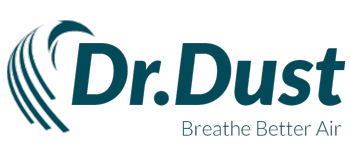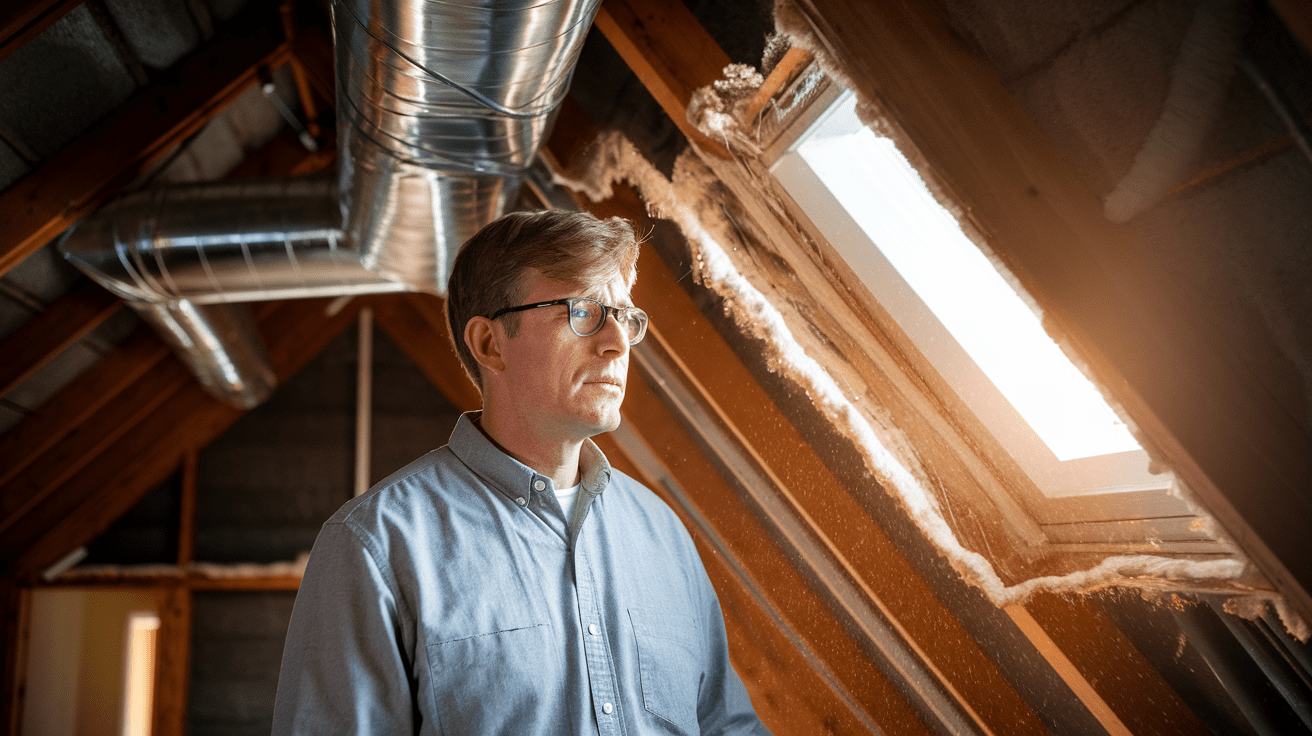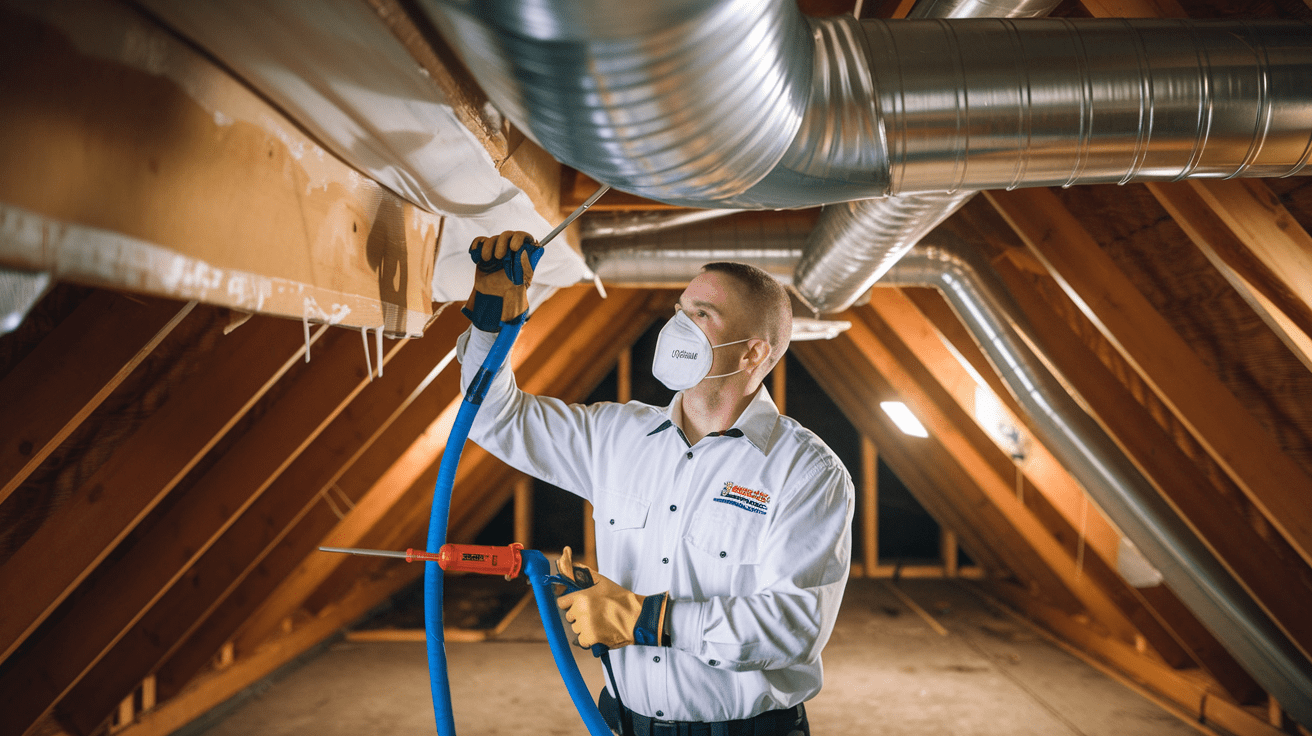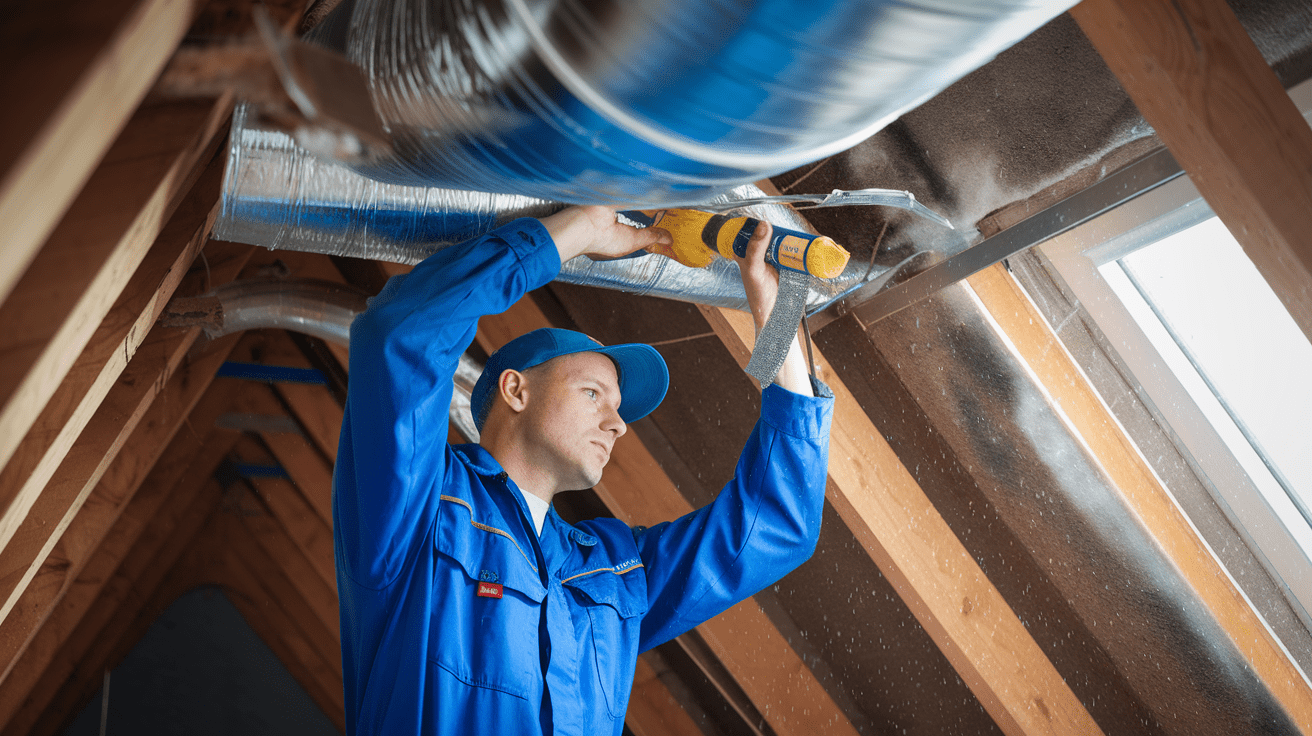Did you know the average home with untreated ductwork leaks about 30% of the air that moves through it? That’s basically like throwing money straight out the window every time your HVAC kicks on.
Your energy bills are probably higher than they need to be. And your home comfort? Less than ideal, with rooms that never quite hit the right temperature no matter how much you fiddle with the thermostat.
Air duct sealing isn’t just another home maintenance task to ignore. It’s the unsung hero of energy efficiency that most homeowners overlook until they see the dramatic before-and-after on their utility bills.
But here’s what most contractors won’t tell you about sealing those invisible passages running through your walls and ceilings…
What Are Air Ducts and Why They Matter
The Role of Air Ducts in Your HVAC System
Ever wondered what happens after you adjust your thermostat? Your HVAC system kicks into gear, but it needs a way to deliver that perfectly conditioned air throughout your home. That’s where air ducts come in.
Air ducts are the unsung heroes of your heating and cooling system. They’re essentially the highways that transport air from your HVAC unit to every room in your house. These pathways—typically made of sheet metal, fiberglass, or flexible plastic—create a network behind your walls, under floors, or above ceilings.
Think of your HVAC system like your body’s circulatory system. Your furnace or air conditioner is the heart, and the ducts are the veins and arteries delivering comfort to every corner of your home. Without properly functioning ducts, even the most expensive, energy-efficient HVAC unit won’t do its job well.
How Leaky Ducts Impact Your Home
Your ductwork might be out of sight, but leaky ducts shouldn’t be out of mind. When ducts develop cracks, holes, or disconnected sections, they’re basically throwing your money into the void.
Here’s the painful truth: leaky ducts can waste up to 30% of your heating and cooling energy. That’s not just bad for your wallet—it’s a nightmare for your comfort too.
When conditioned air escapes before reaching its destination, your system works overtime trying to maintain the temperature you want. The result? Hot and cold spots throughout your home, rooms that never seem comfortable, and energy bills that make you wince month after month.
Leaky ducts don’t just waste energy. They can pull in dust, allergens, and even harmful particles from attics, crawlspaces, or between walls. This dirty air gets circulated throughout your home, potentially worsening allergies or respiratory issues.
Signs Your Ducts Need Sealing
Not sure if your ducts are leaking? Your home is probably dropping some major hints.
First, check your energy bills. If they’re climbing higher than your neighbor’s cat up a tree—despite similar usage patterns—leaky ducts might be the culprit.
Take a walk through your home. Do some rooms feel like the Sahara while others remind you of Antarctica? Uneven temperatures are a classic sign of duct leakage.
Notice more dust than usual, even after cleaning? When ducts leak, they can pull in debris from those rarely-seen spaces behind your walls and spread it throughout your living areas.
Listen closely to your HVAC system. Whistling or rushing sounds from behind walls when your system runs often indicate air escaping from ducts where it shouldn’t.
Finally, if your system seems to run forever without ever making your home comfortable, your ductwork might be bleeding air before it reaches your living spaces.
Understanding Air Duct Leakage
Common Causes of Duct Leaks
Air ducts aren’t meant to leak, but they often do. The most common culprits? Poor installation tops the list. When ducts aren’t properly sealed from the start, air escapes through seams and connections. Age is another factor – even well-installed systems deteriorate over time as materials break down.
Damage from pests can create unexpected openings. Rodents love chewing through ductwork, and they’re surprisingly good at it. Home renovations are another silent destroyer, as contractors might accidentally dent, disconnect, or puncture ducts while working on other projects.
Pressure imbalances in your HVAC system can gradually stress connections until they fail. And don’t forget vibration – your system’s constant operation creates tiny movements that loosen joints over time.
Where Leaks Typically Occur
Duct leaks aren’t random – they follow patterns. The most vulnerable spots are connections between duct sections. Those joints and seams are prime real estate for air loss. Turns and bends in the ductwork create stress points where leaks develop quickly.
The connections to vents and registers are another trouble spot. These transition points often develop gaps as the house settles. Connections to your HVAC equipment itself – where ducts meet your furnace or air handler – frequently leak due to the temperature changes and vibrations.
Poorly insulated ducts in unconditioned spaces like attics, crawlspaces, and basements are especially prone to leaking. The temperature extremes in these areas cause materials to expand and contract, creating openings over time.
How to Detect Leaks in Your Ductwork
Think you might have leaky ducts? Start with the simple stuff. Uneven temperatures between rooms often signal air distribution problems. Higher than normal energy bills can indicate that conditioned air is escaping before reaching your living spaces.
For a DIY check, run your hand along accessible ductwork while the system is running – you might feel air escaping. Visible dust streaks around duct connections are telltale signs of air leaks, as dust gets pulled in or pushed out through openings.
For a more scientific approach, try the smoke test. Hold a lit incense stick near suspected leak areas while the fan runs – the smoke will be drawn toward or blown away from leaks. Professional HVAC technicians can perform pressure tests to quantify leak rates and pinpoint hard-to-find problems.
The Difference Between Normal Wear and Serious Problems
Not all duct issues require immediate attention. Small amounts of leakage (5-10%) are considered normal in most systems. Visual signs of aging like light dust accumulation or minor seam separation typically develop over years of use.
But some issues cross into serious territory. When your energy bills spike suddenly, that’s a red flag. Excessive noise from your ductwork might indicate collapsed sections or severe disconnections. Visible mold or moisture around ducts signals problems that could affect your health.
Major inconsistencies in room temperatures throughout your home often point to significant leakage issues. And if your HVAC system cycles on and off frequently without maintaining desired temperatures, your ducts might be losing too much conditioned air to function properly.
Benefits of Professional Air Duct Sealing
Improved Energy Efficiency and Lower Bills
Your heating and cooling system works overtime when there are leaks in your air ducts. Think about it – up to 30% of the air moving through your ducts could be escaping through holes, gaps, and poor connections. That’s money literally disappearing into your walls and crawlspaces.
Professional air duct sealing plugs these energy drains. When your system doesn’t have to push extra air to compensate for leakage, it runs more efficiently. Many homeowners see a 20-40% reduction in their energy bills after proper duct sealing. That’s not pocket change – we’re talking hundreds of dollars saved each year.
Enhanced Indoor Air Quality
Leaky ducts don’t just let air out – they let unwanted stuff in. Dust, pollen, mold spores, and even pest droppings can get sucked into your duct system from attics, crawlspaces, and between walls.
When professionals seal your ducts, they create a closed system that prevents these contaminants from hitching a ride on your conditioned air. The result? You breathe cleaner air, experience fewer allergy symptoms, and don’t have to dust as often. For families with asthma or respiratory issues, this benefit alone makes duct sealing worth every penny.
Better Temperature Control Throughout Your Home
Ever notice some rooms in your house are too hot while others are too cold? Duct leakage is often the culprit. When air escapes before reaching its destination, you get uneven temperatures and uncomfortable spaces.
Sealed ducts deliver air exactly where it’s supposed to go. After professional duct sealing, most homeowners notice consistent temperatures from room to room. No more fighting over the thermostat or avoiding certain areas of your home because they’re never comfortable.
Extended HVAC System Lifespan
Your heating and cooling equipment wasn’t designed to work twice as hard to compensate for leaky ducts. When your system constantly runs longer cycles trying to maintain temperature, components wear out faster.
Professional duct sealing reduces this strain, potentially adding years to your expensive HVAC equipment. Filters stay cleaner longer, motors don’t run as frequently, and the entire system experiences less stress. The math is simple – a few hundred dollars for duct sealing now can save thousands in premature equipment replacement costs.
Reduced Carbon Footprint
The environmental impact of leaky ducts adds up quickly. When your system uses more energy than necessary, it increases your home’s carbon footprint.
By sealing your ducts, you’re not just saving money – you’re reducing your environmental impact. A typical home with sealed ducts can reduce carbon emissions by nearly a ton per year. Multiply that across a neighborhood, and the positive environmental impact becomes significant.
The Air Duct Sealing Process
Professional Assessment and Inspection
Before any sealing work begins, a thorough inspection of your duct system is essential. Think of it like getting a check-up before starting a new medication – you need to know what’s actually wrong first.
Professionals will come to your home with specialized equipment like thermal cameras and smoke pencils to track down leaks. They’re basically duct detectives, following the trail of escaping air to identify all the trouble spots.
During this assessment, they’ll check for:
- Disconnected or poorly connected ducts
- Holes and tears in ductwork
- Crushed flexible ducts
- Leaky connections at vents and registers
- Poor sealing at the main unit
They’ll also measure your system’s overall leakage rate. Most homes lose 20-30% of air through leaks – that’s like leaving a window wide open year-round!
Sealing Methods and Materials
Once the leaks are identified, it’s time to fix them. And no, duct tape isn’t the answer (ironically, it’s terrible for ducts).
The pros use different sealing methods depending on where the leaks are:
Mastic sealant: This gooey substance is the gold standard for sealing ducts. It’s applied with a brush to joints and small holes, creating an airtight seal when it dries. Unlike tape, it won’t dry out and peel away over time.
Metal tape: Not the gray stuff from your junk drawer! Professional-grade foil tape with strong adhesive backs up the mastic at certain connection points.
Aerosol sealing: For those hard-to-reach areas, aerosol sealing is a game-changer. The process involves injecting a fine mist of sealant particles into pressurized ducts. The particles stick only to leaks, building up until they’re sealed. Pretty cool, right?
Verification and Testing After Sealing
The job isn’t done until it’s tested. After sealing, technicians will run another test to measure the improvement in your system’s performance.
Using a duct blaster test, they’ll pressurize the system and measure airflow at various points. This shows exactly how much the leakage has been reduced – most professional jobs aim for at least a 75% reduction in leakage.
They’ll also check that airflow is balanced throughout your home. No more freezing bedrooms and sweltering living rooms!
Maintenance After Sealing
Your newly sealed ducts won’t need much special attention, but regular maintenance ensures they stay in top shape.
Schedule an HVAC check-up annually to verify the seals are holding. Replace air filters every 1-3 months to prevent dust build-up that could stress the system. And keep an eye out for any signs of trouble – uneven temperatures, increased energy bills, or dusty rooms could indicate new leaks have formed.
Many companies offer maintenance plans that include duct inspections. It’s worth it – proper maintenance can extend the life of your sealing job from 10 years to 15 or more.
Properly sealed air ducts are a vital yet often overlooked component of an efficient home HVAC system. As we’ve explored, leaky ducts can significantly impact your energy bills, indoor air quality, and overall comfort. Professional air duct sealing addresses these issues by identifying and repairing leaks throughout your duct system, creating a more efficient pathway for conditioned air to travel through your home.
Take the time to assess your home’s ductwork, especially if you’re experiencing uneven heating or cooling, higher than normal utility bills, or persistent dust problems. Investing in professional air duct sealing not only improves your immediate comfort but provides long-term benefits for your health, wallet, and the environment. Your HVAC system will thank you with improved performance, extended equipment life, and the reliable comfort you deserve.





